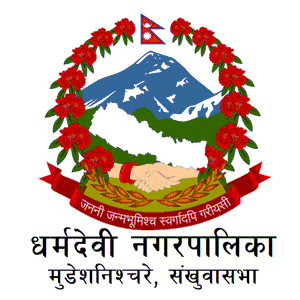Overview
Nepal Bank Limited was established on 30th Kartik, 1994 BS, as the first commercial bank in the country. For nearly two decades, the bank also carried the responsibilities of a central bank. It played a foundational role in institutionalizing Nepal’s banking system and capital formation, effectively breaking through the era of financial vacuum.
Following the policies and directives of the Government of Nepal and Nepal Rastra Bank, the bank has consistently invested in agriculture, energy, micro, cottage, small, and medium enterprises, and underserved sectors. It has also promoted self-employment, entrepreneurship, and job creation through concessional loans.
In recent years, the bank has focused on providing customer-friendly services through technology and has embraced sustainable banking practices. Various financial literacy programs have been conducted nationwide, and the bank continues to fulfill its institutional social responsibilities.
A Model of Public-Private Partnership
Since its establishment, Nepal Bank has continually addressed its customers' needs and demands. By expanding services and embracing innovation, the bank has committed itself to playing a stronger role in economic development and job creation through tech-driven banking.
To enhance financial access and inclusion, Nepal Bank operates through 229 branches, 60 extension counters, and 205 ATM outlets across 71 districts, serving approximately 2.3 million customers with modern banking services.
Nepal Bank is dedicated to delivering superior, reliable, and advanced banking services.
What Makes Nepal Bank Different?
Nepal Bank’s primary distinction lies in its foundational role in introducing banking literacy in Nepal, even before the establishment of the central bank. From 1994 BS to 2013 BS, it held unprecedented responsibility for functioning as the central bank.
It contributed to establishing key financial institutions such as the Nepal Industrial Development Corporation, Rastriya Banijya Bank, and Agricultural Development Bank. It also holds a founding shareholder role in foreign joint ventures and private sector banks. It offers high deposit interest and low lending rates, with branches in remote areas.
Its lower base rate allows for more affordable loans, cementing its status as a standard-setting bank in Nepal.
Historical Evolution of the Banking Sector
Nepal’s banking history is deeply tied to industrial development. The term "bank" traces its linguistic roots to Italian "Banco", German "Bank", French "Banque", and English "Bank". In Nepal, however, the history of currency dates back to King Mandev’s era when Mananka coins were introduced.
During King Gunakamdev’s reign, the state took a loan to rebuild Kathmandu, and Shankhadhar Sakhwa repaid citizens' debts—early banking practices.
Institutional banking began in 1938 AD with the establishment of Tejarath Adda by Prime Minister Ranodip Singh. This institution provided loans against gold and silver but did not accept deposits. Legalized banking began on 30th Kartik, 1994 BS, with the establishment of Nepal Bank Limited under the Nepal Bank Act 1994 BS, marking the official start of banking in Nepal.
Nepal Rastra Bank was established in 2013 BS, beginning a new era of structured banking development. Nepal’s financial system is robust today, with a vast network of banks and financial institutions.
Empowering Urban and Rural Communities
Banks and financial institutions have played a vital role in educating rural and urban populations about the significance of banking. Banks have become reliable financial partners by promoting savings and offering safe deposit and locker services.
Special loan schemes for the poor, low-income families, disaster-affected households, and marginalized groups—guided by Nepal Rastra Bank—have empowered communities. These include loans for:
-
Dairy and livestock farming
-
Vegetable and fruit farming (e.g., Rudraksha, orange, cardamom)
-
Cottage and small industries (e.g., handicrafts, allo farming)
-
Tourism enterprises (e.g., homestays, hotels, restaurants)
These initiatives have strengthened rural economies and supported self-employment.
Support for Migrant Workers and Families
Banks also play a vital role in foreign employment by providing secure and easy remittance services. This has dramatically helped families in Nepal receive funds and support for their children’s education.
Embracing the Digital Age
Modern banking has been revolutionized by digital technologies such as:
-
E-banking
-
Mobile banking
-
QR payments
-
POS machines
-
ATMs
These services allow customers to make payments, recharge phones, pay utility and college bills, and book plane tickets—conveniently from home.
Core Services & Innovations
Nepal Bank today offers a comprehensive range of modern banking services:
-
Personal savings—NBL Pioneer, NRN Savings, Special, and Sahayatri Bachat Accounts
-
Digital banking—Internet Banking, Mobile App (NBL Smart), and QR‑based payments
-
Cards—VISA debit & credit cards, travel cards
-
Loans—Micro‑enterprise, agriculture, energy, SME, and concessional credit
-
Safe deposit lockers and remittance services, Nepal Bank Ltd
Recently, the bank has focused on digital growth, aligning with central bank directives to curb fraud and boost AI‑based risk systems. It also increased customer protection efforts after warning about social‑media scams that misuse its branding.
Role in National Development
Nepal Bank continues to advance financial inclusion and literacy, operating in 71 districts and serving approximately 2.3 million customers. It supports rural upliftment through concessional lending to marginalized groups, agricultural enterprises, cottage industries, and MSMEs.
Digital payment adoption remains a key future focus. Cross‑border QR payments with India began mid‑2024, but full integration remains pending. The bank’s growth aligns with government policy emphasizing green energy, digital banking, and the FY 2025‑26 economic transformation.
What Distinguishes Nepal Bank
-
Pioneer in formal banking and financial literacy in Nepal.
-
First institution to serve as Nepal’s central bank until 1956.
-
Founded other key institutions like NIDC, RBB, and ADB, and retained founder-shareholder status in JV/private banks.
-
Broad rural outreach—branches in remote areas.
-
Competitive deposit and lending rates, with a low base lending rate.
-
Continued emphasis on social responsibility and financial literacy initiatives.
Banking has become the backbone of Nepal's economy, from daily household needs to major industries and hydropower projects. It plays a critical role in strengthening the nation’s financial infrastructure.




